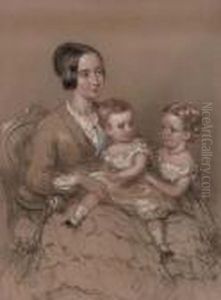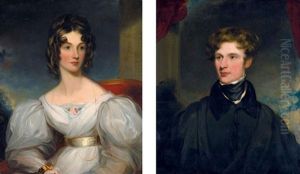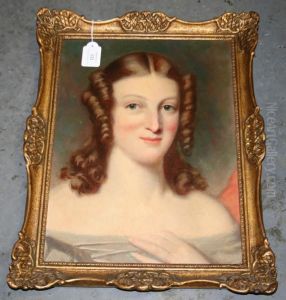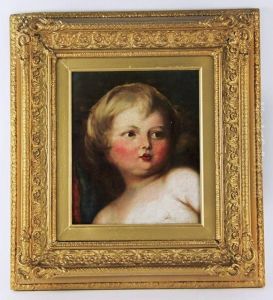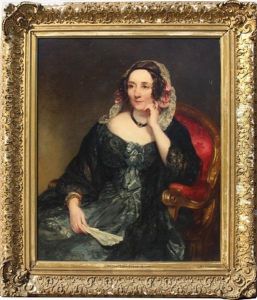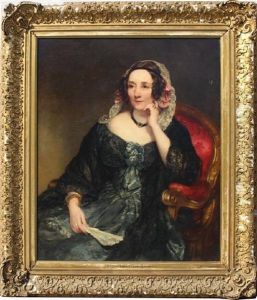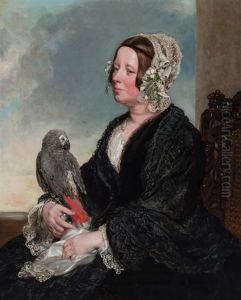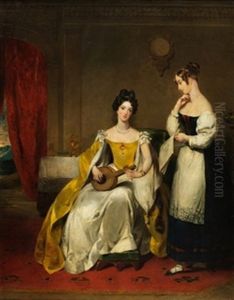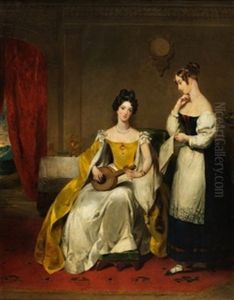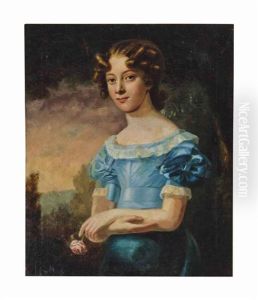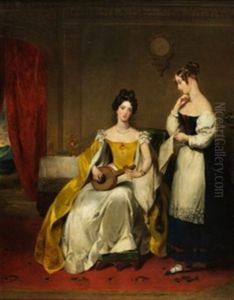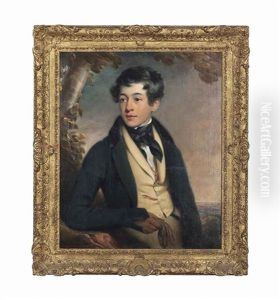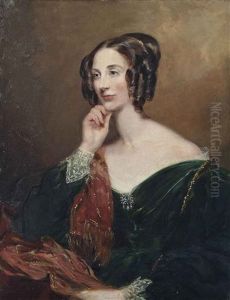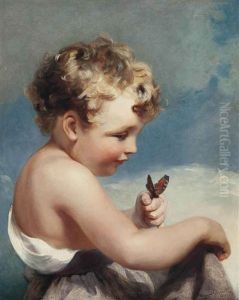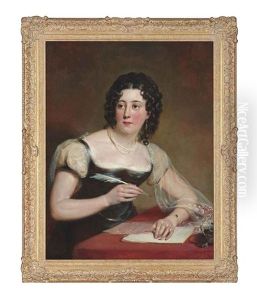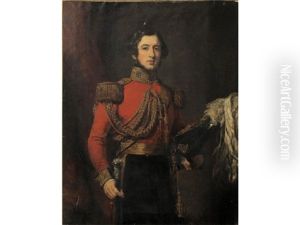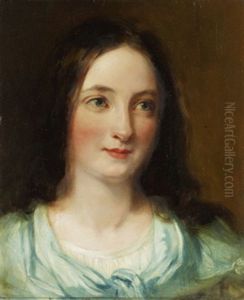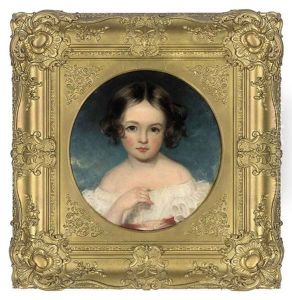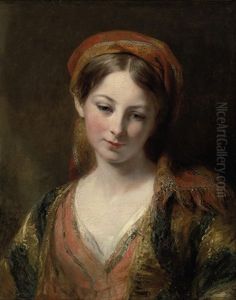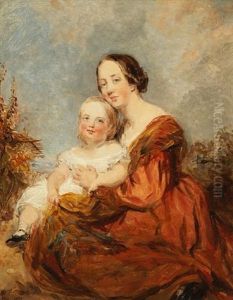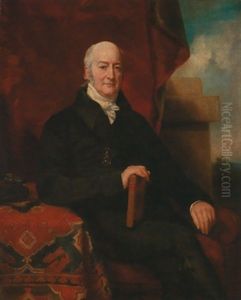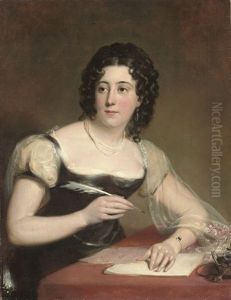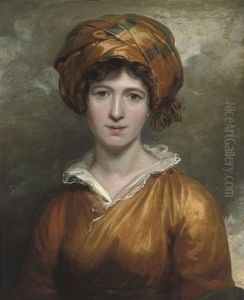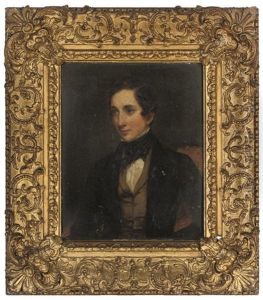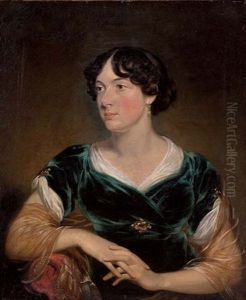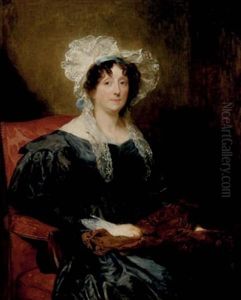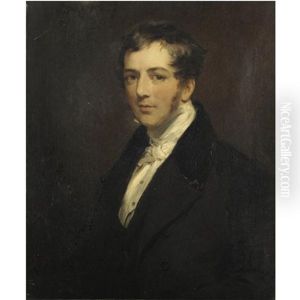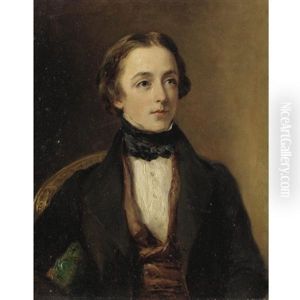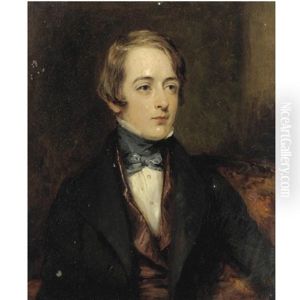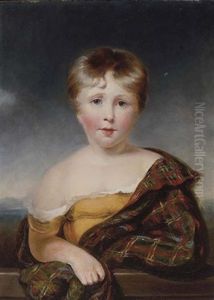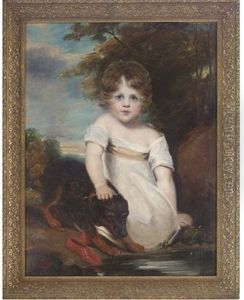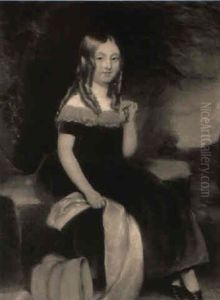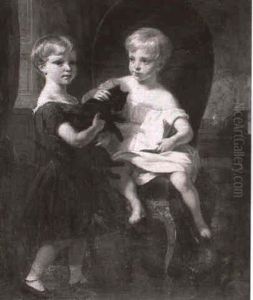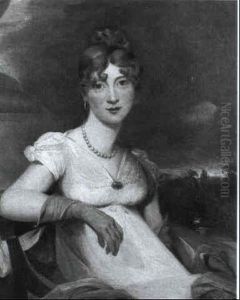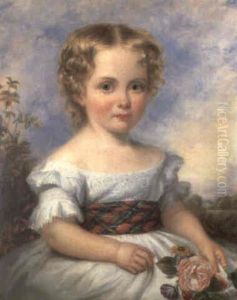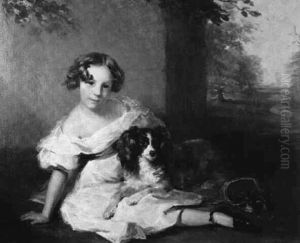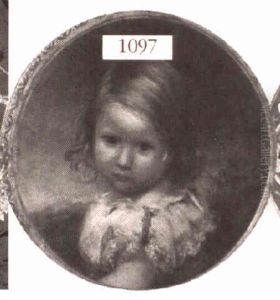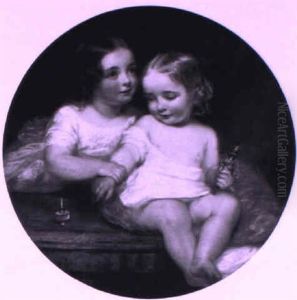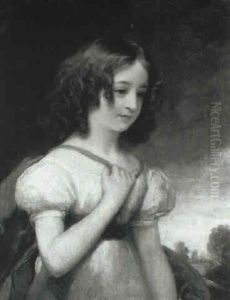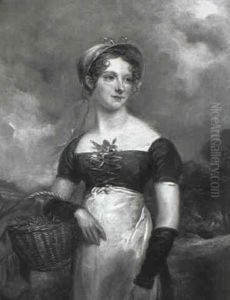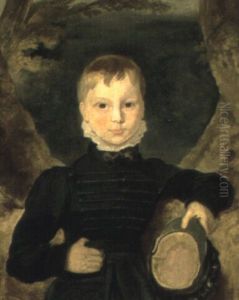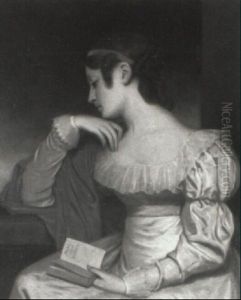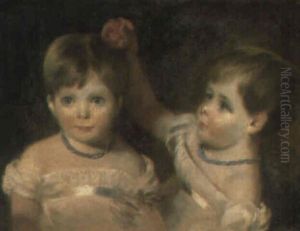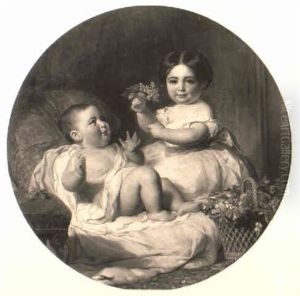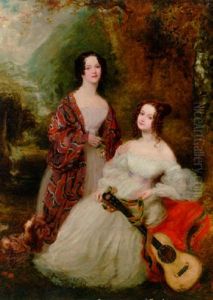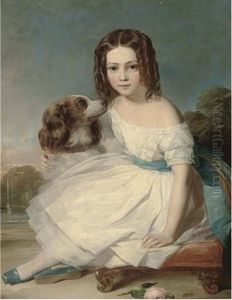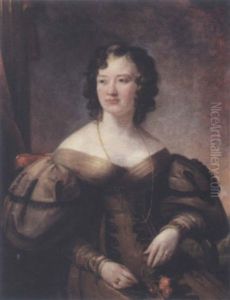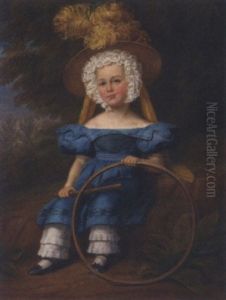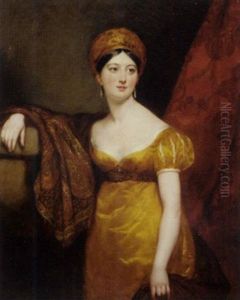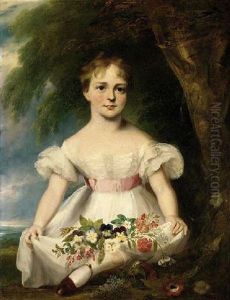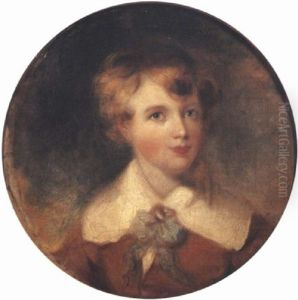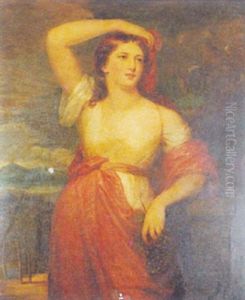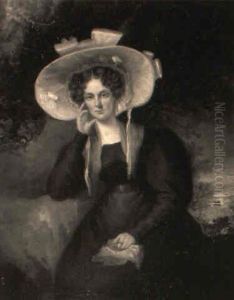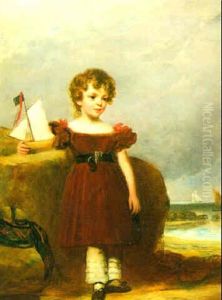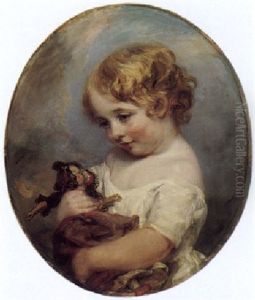Margaret Sarah Carpenter Paintings
Margaret Sarah Carpenter, born Margaret Sarah Geddes on 1793 in Salisbury, was a distinguished English portrait painter of the 19th century. Despite the gender biases of her time, she emerged as a prominent figure in the British art scene, known for her exquisite portrait paintings that captured the essence of her subjects with remarkable sensitivity and skill.
Margaret's artistic journey began in her early years, showing an evident talent in drawing and painting. Unlike many women of her era, she pursued her passion for art and developed her skills, largely self-taught, which was a significant achievement in itself. Her ambition and talent led her to move to London in 1814, a bold step that marked the beginning of her professional career. In London, she quickly established herself as a portrait painter, attracting a clientele that included members of the British aristocracy and notable literary figures. Her marriage to fellow artist William Hookham Carpenter in 1817 did not diminish her career; instead, she continued to thrive, balancing her personal life and her profession with remarkable adeptness.
Margaret Carpenter's style is characterized by its elegance and the realistic portrayal of her subjects. She exhibited a keen eye for detail and a profound ability to capture the psychological depth of the individuals she painted, making her works highly sought after. Her portraits were not just mere representations; they were insightful studies of character and beauty, infused with a sense of intimacy and immediacy that was uncommon at the time.
Over the years, Carpenter's reputation grew, and she became a regular exhibitor at the Royal Academy, where her works were often met with critical acclaim. Despite the challenges she faced as a woman in a male-dominated field, her artistry earned her respect and admiration from her peers and the public alike.
Margaret Sarah Carpenter's legacy is that of a pioneering woman who not only succeeded in her chosen field against the odds but also contributed significantly to the British portrait painting tradition. Her works continue to be celebrated for their beauty, sensitivity, and depth, and her life remains an inspiring story of talent, determination, and resilience. She passed away in 1872, leaving behind a body of work that continues to be admired for its artistic merit and historical significance.
